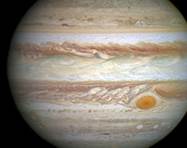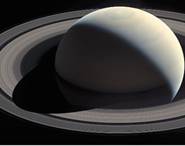Astronomy Club – August 2021
August 5, 2021
Posted by Lake Erie Nature and Science Center
More than Science?
In over 25 years of astronomy outreach, I’ve often heard comments from people saying they are not interested in astronomy because they do not like science. If science isn’t for you, we should recognize that for hundreds of generations there was no distinction between science and art. It is totally acceptable that gazing at the sky inspires and motivates purely for its aesthetic and artistic value. – Bill Reed
News and Current Events
What’s going on in the world of space and astronomy
The giants of our Solar System are back


Just in time for warm summer evenings, both Jupiter and Saturn are gearing up to be in prime observing positions in the sky. On August 2 and 29, Saturn and Jupiter will be at opposition respectively. Both planets, rising as the Sun is setting, are in prime locations for evening viewing all summer long!
Opposition: The time when the Earth’s orbit places it between a planet and the Sun, making the Sun and planet appear in opposite directions as viewed from the Earth. Oppositions are the best opportunity for observing planets because they are away from the glare of the Sun, and relatively close to the Earth.
Did you know….?
Jupiter Facts
- The planet only takes about 10 hours to complete a full rotation on its axis.
- The beautiful whirling clouds and storms that you see on Jupiter are only about 30 miles thick.
- Jupiter is 2.5 times more massive than all of the other planets in the Solar System combined.
- Jupiter has 53 named moons and another 26 awaiting official names.
- Jupiter has thin rings that are not visible from Earth.
- Its Great Red Spot is actually a planetary-sized storm that has been raging on for centuries.
Saturn Facts
- It is a gas giant made up mostly of hydrogen and helium.
- Saturn is the sixth planet from the sun and the second-largest planet in the solar system.
- Saturn cannot support life as we know it, but some of Saturn’s moons have conditions that may support life.
- Saturn has 53 named moons and another 29 moons awaiting confirmation.
- In 1610, Galileo was the first to see Saturn’s rings, although the rings looked more like handles or arms.
- Saturn rotates about once every 10.5 hours.
Astro-tainment
Space and Media
Greenland

This month we reviewed the movie “Greenland” directed by Ric Roman Waugh
A family fights for survival as a planet-killing comet races to Earth. Despite this generic and oft-seen synopsis, I think this movie has a bit more to offer. I often rate movies based on how much they make me think about my life and community afterwards and this one stuck with me for a little while. While this has all of the sound and fury of a Saturday night disaster movie, it also reaches a bit deeper to explore the impact (no pun intended) on a family trying to survive. – Highly recommended
Speaking of disasters…
The asteroid impact that wiped out the dinosaurs occurred about 65 million years ago in what is now modern-day Yucatan, Mexico. Measuring about 6 miles across, the rock created a crater over 100 miles across.
This event generated 300-foot-tall tsunamis, triggered volcanic activity and caused massive wildfires. This, combined with a massive greenhouse effect from the release of CO2 from dissolved rocks, and the resulting dust cloud, disrupted photosynthesis around the globe resulting in mass vegetation die-offs that devastated the food chain.
Wrap your brain around this…
Mind-blowing facts
How Art and Science Intersect

A great deal of creativity is required to make scientific breakthroughs, and art is just as often an expression or product of scientific knowledge.
It can be argued that art originated from a human desire to document the natural world and in the beginning, there was no art.
Leonardo DaVinci’s greatest artistic triumph is actually a monumental feat of science. His intense and detailed study of chemistry, optics, and anatomy resulted in the smile of masterpiece known as the Mona Lisa.
Join Astronomy Club!
Benefits include:
- Monthly Meetings
- Telescope Night Presentations
- Movie Nights
- Telescope Training and Loan Program
- Volunteer Opportunities
Annual Fee: $60/household
Upcoming Events
Perseid Meteor Shower Night
Friday, August 13 @ 7:15 pm
Astronomy Club Meeting
Wednesday, August 18 @ 6:30 pm
Telescope Night
Saturday, August 21 @ 8:30 pm

